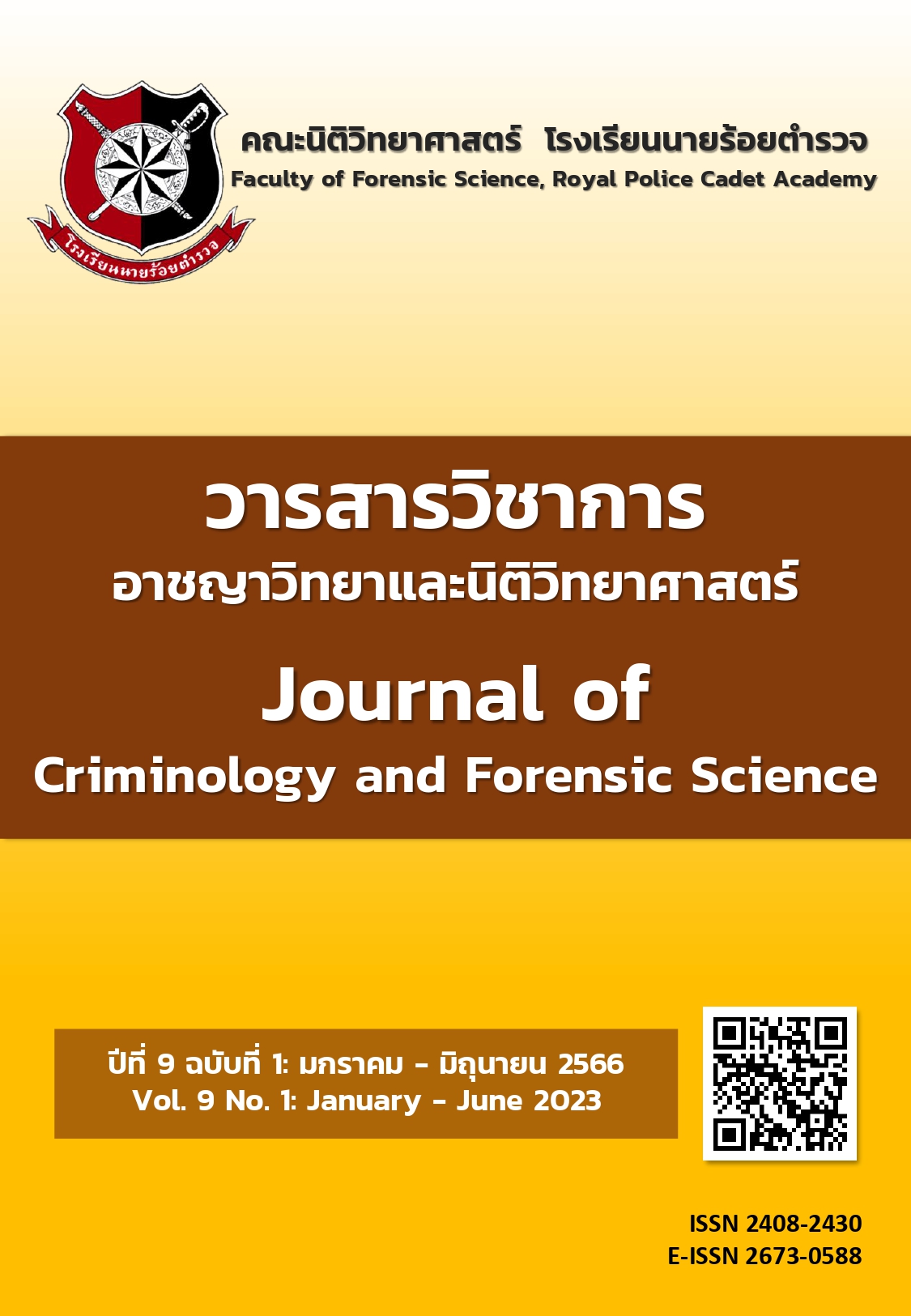Preventive and Corrective Measures Against the Exploitation of Online Child Sexual Abuse Material
Main Article Content
Abstract
Online child sexual exploitation and abuse is a pervasive and growing threat to children, which primarily includes offences related to the production, distribution, and possession of child sexual abuse material (CSAM). This research examines the current situation of the exploitation of CSAM and proposes comprehensive preventive and corrective measures to address this issue in Thailand. Qualitative research methods were employed to collect data, including documentary research, in-depth interviews, and a focus group discussion. According to research findings, the preventive and corrective measures against the exploitation of CSAM were classified into three levels in accordance with the public health model of crime prevention; 1) primary level – the prevention of CSAM offences, 2) secondary level – the control of CSAM impact and immediate response to the crime, 3) tertiary level – the remedial treatment for victims and the prosecution of offenders, including the prevention of revictimisation and recidivism. Each level of preventive and corrective measures involved five stakeholders, namely legislators, offenders, victims, criminal justice professionals, and service providers.
Article Details

This work is licensed under a Creative Commons Attribution-NonCommercial-NoDerivatives 4.0 International License.
เนื้อหาและข้อมูลในบทความที่ลงตีพิมพ์ใน วารสารวิชาการอาชญาวิทยาและนิติวิทยาศาสตร์ โรงเรียนนายร้อยตำรวจ ถิอว่าเป็นข้อคิดเห็นและความรั้บผิดชอบของผู้เขียนบทความโดยตรงซึ่งกองบรรณาธิการวารสาร ไม่จำเป็นต้องเห็นด้วยหรือรับผิดชอบใดๆ
บทความ ข้อมูล เนื้อหา รูปภาพ ฯลฯ ที่ได้รับการตีพิมพ์ใน วารสารวิชาการอาชญาวิทยาและนิติวิทยาศาสตร์ ถือว่าเป็นลิขสิทธิ์ของวารสาร วารสารวิชาการอาชญาวิทยาและนิติวิทยาศาสตร์ หากบุคคลหรือหน่วยงานใดต้องการนำทั้งหมดหรือส่วนหนึ่งส่วนใดไปเผยแพร่ต่อหรือเพื่อกระทำการใดๆ จะต้องได้รับอนุญาตเป็นลายลักษณ์อักษรจาก วารสารวิชาการอาชญาวิทยาและนิติวิทยาศาสตร์ ก่อนเท่านั้น
References
Beier, K. M. (2016). Proactive Strategies to Prevent Child Sexual Abuse and the Use of Child Abuse Images: The German Dunkelfeld-Project for Adults (PPD) and Juveniles (PPJ). In Sexual violence (pp. 249-272). Springer.
Brantingham, P. J., & Faust, F. L. (1976). A Conceptual Model of Crime Prevention. Crime and Delinquency, 22(3), 284–296.
Clarke, R. V., & Felson, M. (2017). Introduction: Criminology, Routine Activity, and Rational Choice. In Routine Activity and Rational Choice (pp. 1–14). Routledge.
Edwards, G., Christensen, L. S., Rayment-McHugh, S., & Jones, C. (2021). Cyber Strategies Used to Combat Child Sexual Abuse Material. Trends and Issues in Crime and Criminal Justice, (636), 1-16.
Internet Watch Foundation. (2022). IWF Annual Report 2021. https://annualreport2021.iwf.org.uk
INTERPOL. (2022). International Child Sexual Exploitation Database. https:// www.interpol.Int/Crimes/Crimes-against-children/International-Child-Sexual-Exploitation-database
Jaruthipmongkhon, W., Lengvithaya, J., & Kamprasert, K. (2020). Problems of Law Enforcement on the Offence of Possessing Child Pornographic Media. Journal of Local Governance and Innovation, 4(3), 33-58.
Kloyrayab, P., & Lerdtomornsakul, U. (2021). The Prevention of Online Child Sexual Crime Victimization. Quality of Life and Law Journal, 17(1), 33-47.
Meephiam, P., & Sangtongdee, U. (2021). A Concept of Crime Prevention on Applications of Artificial Intelligence for Combatting Online Child Sexual Exploitation and Abuse. Journal of Criminology and Forensic Science, 7(2), 189-204.
Meephiam, P., & Suebpongsiri, S. (2022). Child Sexual Exploitation by Criminals on the Dark Web. Journal of Criminology and Forensic Science, 8(1), 200-214.
National Center for Missing and Exploited Children. (2022). CyberTipline 2021 Report. https://www.missingkids.org/gethelpnow/cybertipline/cybertiplinedata
Quayle, E., & Koukopoulos, N. (2019). Deterrence of Online Child Sexual Abuse and Exploitation. Policing: A Journal of Policy and Practice, 13(3), 345-362.
Sangtongdee, U., Poengranai, K., & Meephiam, P. (2020). Hashing Technology and PhotoDNA Database in Multimedia Forensics. Journal of Criminology and Forensic Science, 6(2), 181-196.
Steel, C. M., Newman, E., O’Rourke, S., & Quayle, E. (2022). Lawless Space Theory for Online Child Sexual Exploitation Material Offending. Aggression and Violent Behavior, 101809.
Sutherland, E. H. (1972). The Theory of Differential Association. In Readings in Criminology and Penology (pp. 365-371). Columbia University Press.
TICAC. (2022). TICAC Statistics 2015-2022. Royal Thai Police.
ECPAT, INTERPOL, & UNICEF. (2022). Disrupting Harm in Thailand: Evidence on Online Child Sexual Exploitation and Abuse. Global Partnership to End Violence Against Children.


